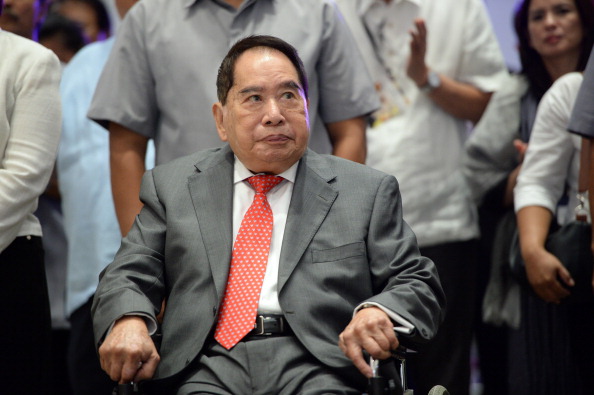What was Henry Sy's net worth?
Henry Sy was a Chinese-Philippine businessman who had a net worth of $19 billion at the time of his death in 2019. Henry Sy's empire made him one of Asia's most influential entrepreneurs and the richest person in the Philippines for most of his adult life.
Sy was best known as the founder of SM Investments Corporation, which operates shopping malls, banks, hotels, and residential developments across the country. His success story—rising from a penniless immigrant's son who sold shoes in Manila to the creator of the Philippines' largest conglomerate—has become one of Southeast Asia's most celebrated tales of persistence, vision, and business acumen.
Early Life and Education
Henry Tan Chi Sieng Sy was born on December 25, 1924, in Xiamen, China. He was the eldest son of a poor merchant who operated a small convenience store. In the 1930s, his family migrated to the Philippines in search of better opportunities and opened a small shop in Manila's Quiapo district. When World War II broke out, their store was destroyed, leaving the family impoverished.
After the war, Sy worked tirelessly to rebuild his livelihood. He began by selling surplus military shoes and other goods, walking the streets of Manila to find customers. His determination and keen understanding of consumer needs allowed him to save enough capital to open a small shoe store. He studied commerce at Far Eastern University while running his business, laying the foundation for what would eventually become a multibillion-dollar empire.
Founding of Shoemart and the Birth of SM
In 1958, Sy opened a modest shoe store called Shoemart in downtown Manila. His concept was simple but revolutionary for the time: provide affordable, quality shoes in a clean, customer-friendly environment. The store's success was immediate, and Sy soon expanded into clothing and accessories, turning Shoemart into a full-fledged department store.
By the 1970s, Shoemart—abbreviated as "SM"—had become synonymous with modern retail in the Philippines. Sy recognized the country's growing middle class and its appetite for convenience and variety. In 1985, he took a bold risk by opening SM City North EDSA, the first supermall in the Philippines. Many considered the project too ambitious given the country's political instability at the time, but the mall's massive success validated his vision and marked the beginning of the SM Mall era.
From that point forward, SM malls became landmarks across the Philippines, offering not just shopping but also entertainment, dining, and community gathering spaces. The model redefined consumer culture in the country and helped formalize the local retail economy.

TED ALJIBE/AFP/Getty Images
Expansion into Banking and Real Estate
Never content with a single line of business, Sy diversified aggressively. In 1982, he acquired Acme Savings Bank, which he rebranded as Banco de Oro (BDO). Under his leadership, BDO grew through disciplined management and strategic acquisitions, eventually becoming the largest bank in the Philippines by assets.
He also founded SM Prime Holdings, the property arm of his conglomerate, to manage and develop malls, office towers, hotels, and residential complexes. SM Prime later became one of Southeast Asia's largest integrated property developers, with projects extending beyond the Philippines to China.
By the 2000s, SM Investments Corporation had evolved into a publicly traded holding company encompassing retail (SM Retail), real estate (SM Prime Holdings), and banking (BDO and China Bank). This tri-sector foundation ensured consistent growth even during economic downturns and natural disasters.
Business Philosophy and Leadership
Henry Sy's business philosophy centered on patience, reinvestment, and customer service. He was known for his frugality, his habit of reinvesting nearly all profits into expansion, and his belief that success required both vision and persistence. Despite his immense wealth, Sy remained low-profile and avoided political entanglements. He maintained that the best measure of success was not personal luxury but the number of livelihoods his businesses could sustain.
He also placed strong emphasis on family involvement in management. His six children—Teresita, Elizabeth, Henry Jr., Hans, Herbert, and Harley—were all active in the SM Group, each managing different divisions to ensure continuity and professional governance.
Philanthropy and Legacy
Henry Sy's philanthropic work was primarily conducted through the SM Foundation, which supports education, healthcare, and disaster response. The foundation has provided thousands of college scholarships, built numerous public school buildings, and funded community hospitals and relief centers throughout the Philippines.
Sy passed away peacefully on January 19, 2019, at age 94, leaving behind one of the most enduring legacies in Asian business history. His empire continues to thrive under his family's stewardship, with SM malls serving as economic anchors for countless Philippine cities.
Today, Henry Sy is remembered not just as the richest Filipino but as the man who modernized Philippine retail, banking, and urban development. His journey from selling shoes on the streets of Manila to building an empire worth tens of billions remains a defining example of resilience, discipline, and faith in long-term growth—a lasting inspiration to generations of Filipino entrepreneurs.
/2012/07/Henry-Sy.jpg)
/2013/03/Lars-Larsen.jpg)
/2012/12/Donald-Soffer.jpg)
/2012/11/Denise-York.jpg)
/2014/06/john-portman-1.jpg)
/2013/04/Tony-Tan-Caktiong-1.jpg)
/2020/01/lopez3.jpg)
/2009/09/Brad-Pitt.jpg)
/2009/09/Jennifer-Aniston.jpg)
:strip_exif()/2009/09/P-Diddy.jpg)
/2009/09/Cristiano-Ronaldo.jpg)
/2020/02/Angelina-Jolie.png)
/2020/06/taylor.png)
/2017/02/GettyImages-528215436.jpg)
/2018/03/GettyImages-821622848.jpg)
/2009/11/George-Clooney.jpg)
/2020/04/Megan-Fox.jpg)
/2012/07/Henry-Sy.jpg)
/2013/04/Tony-Tan-Caktiong-1.jpg)
/2014/01/he.jpg)
/2014/03/Manuel-Villar.png)
/2013/03/Lars-Larsen.jpg)
/2018/03/CNW-Man-5.png)
/2012/11/Denise-York.jpg)
/2012/12/Donald-Soffer.jpg)
:strip_exif()/2015/09/GettyImages-476575299.jpg)
/2019/11/GettyImages-1094653148.jpg)
/2019/04/rr.jpg)
/2019/10/denzel-washington-1.jpg)